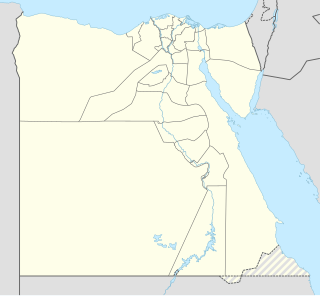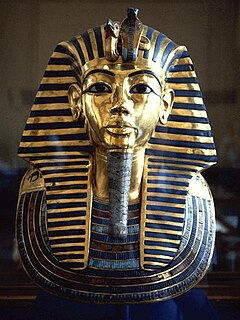Kent R. Weeks | |
|---|---|
| Born | December 16, 1941 |
Kent R. Weeks (born December 16, 1941) is an American Egyptologist.
Kent R. Weeks | |
|---|---|
| Born | December 16, 1941 |
Kent R. Weeks (born December 16, 1941) is an American Egyptologist.
He was born in Everett, Washington, on December 16, 1941.
He remembers deciding to be an Egyptologist at the age of eight. [1] Weeks attended R. A. Long High School in Longview, Washington, and graduated in 1959. He studied anthropology at University of Washington in Seattle, from where he obtained a master's degree. He visited Egypt for the first time in 1963 and was active in digs in Nubia associated with relocation work necessitated by the building of the Aswan Dam and the flooding of the Nile Valley to create Lake Nasser. In 1970 he earned a doctorate in Egyptology from Yale University.
Dr. Weeks' professional career began with his appointment as Professor of Anthropology at American University in Cairo for the academic year 1971–72. Later he was appointed assistant Curator of Egyptian Art at the Metropolitan Museum of Art, then assistant Professor at the University of Chicago and Director of its Institute in Luxor (Chicago House), then professor at the University of California, Berkeley, and in 1988 he became a professor of Egyptology at The American University in Cairo. His wife, Susan Weeks, was also an archaeologist and a gifted artist before her death in December 2009.
In 1978, Weeks devised and launched the Theban Mapping Project –an exceedingly ambitious plan to photograph and map every temple and tomb in the Theban Necropolis. As part of this project, Weeks introduced hot air ballooning to the Luxor area with the intent of making inexpensive aerial surveys, which grew into an important part of the local tourist industry. However, a more important achievement of the Project was its 1995 discovery of the identity, and vast dimensions, of KV5, the tomb of the sons of Ramesses II in the Valley of the Kings.
In 1996, Weeks received the Golden Plate Award of the American Academy of Achievement. [2] [3]

Luxor is a city in Upper (southern) Egypt and the capital of Luxor Governorate. The population of Luxor is 422,407 (2021), with an area of approximately 417 square kilometres (161 sq mi). It is among the oldest inhabited cities in the world.

Tomb KV5 is a subterranean, rock-cut tomb in the Valley of the Kings. It belonged to the sons of Ramesses II. Though KV5 was partially excavated as early as 1825, its true extent was discovered in 1995 by Kent R. Weeks and his exploration team. The tomb is now known to be the largest in the Valley of the Kings. Weeks' discovery is widely considered the most dramatic in the valley since the discovery of the tomb of Tutankhamun in 1922.
The Theban Mapping Project is an archaeological expedition devoted to Ancient Egypt. It was established in 1978 by the Egyptologist Dr. Kent R. Weeks at the University of California, Berkeley. In 1985, it was moved to the American University in Cairo. The Project's original goal was to create an archaeological map of the Valley of the Kings, and that was published as the Atlas of the Valley of the Kings in 2000. Since 2001, the Project has also developed a management plan for the Valley of the Kings, which is funded by the World Monuments Fund.

Meave G. Leakey is a British palaeoanthropologist. She works at Stony Brook University and is co-ordinator of Plio-Pleistocene research at the Turkana Basin Institute. She studies early hominid evolution and has done extensive field research in the Turkana Basin. She has Doctor of Philosophy and Doctor of Science degrees.

Tomb TT320, otherwise known as the Royal Cache, is an Ancient Egyptian tomb located next to Deir el-Bahri, in the Theban Necropolis, opposite the modern city of Luxor. It contains the last resting place of High Priest of Amun Pinedjem II, his wife Nesikhons, and other close family members, in addition to an extraordinary collection of mummified remains and funeral equipment of more than 50 kings, queens, and other New Kingdom members of the royalty, as it was later used as a cache for royal mummies during the Twenty-first Dynasty.

Tomb KV11 is the tomb of ancient Egyptian Ramesses III. Located in the main valley of the Valley of the Kings, the tomb was originally started by Setnakhte, but abandoned when it broke into the earlier tomb of Amenmesse (KV10). Setnakhte was buried in KV14. The tomb KV11 was restarted and extended and on a different axis for Ramesses III.

James Burton was an early British Egyptologist, known for his pioneering exploration and mapping of the Valley of the Kings, during which he became the first individual of the modern age to enter KV5; his pioneering excavations at Karnak, during which he discovered the Karnak king list; and his excavations at Medinet Habu, during which he was part of the team that discovered TT391.

Tomb KV10, located in the Valley of the Kings near the modern-day Egyptian city of Luxor, was cut and decorated for the burial of Pharaoh Amenmesse of the Nineteenth Dynasty of Ancient Egypt. However, there is no proof that he was actually buried here. Later, the decoration was replaced with scenes for Takhat and Baketwernel—two royal women dating to the late 20th Dynasty.
Edwin C. Brock was an American Egyptologist, who worked for the Theban Mapping Project at the American University in Cairo. He worked on royal sarcophagi in the Valley of the Kings. He also worked in the tombs of Merenptah (KV8) and Amenmeses (KV10), along with Otto Schaden and the Theban Mapping Project. He was the co-director of the Amenmesse Tomb Project, which in February 2006 announced the discovery of KV63. He also supervised archaeological salvage work in Luxor as part of the wastewater project there.

The Valley of the Kings, also known as the Valley of the Gates of the Kings, is a valley in Egypt where, for a period of nearly 500 years from the 16th to 11th century BC, rock-cut tombs were excavated for the pharaohs and powerful nobles of the New Kingdom.
Herbert Eustis Winlock was an American Egyptologist and archaeologist, employed by the Metropolitan Museum of Art for his entire career. Between 1906 and 1931 he took part in excavations at El-Lisht, Kharga Oasis and around Luxor, before serving as director of the Metropolitan Museum from 1932 to 1939.
Theodore M. Davis was an American lawyer and businessman. He is best known for his excavations in Egypt's Valley of the Kings between 1902 and 1913.

Salima Ikram is a Pakistani professor of Egyptology at the American University in Cairo, a participant in many Egyptian archaeological projects, the author of several books on Egyptian archaeology, a contributor to various magazines and a guest on pertinent television programs.
Elizabeth Mary Thomas was an American Egyptologist.
Donald P. Ryan is an American archaeologist, Egyptologist, writer and a member of the Division of Humanities at Pacific Lutheran University in Tacoma, Washington. His areas of research interest include Egyptian archaeology, Polynesian archaeology, the history of archaeology, the history of exploration, ancient languages and scripts and experimental archaeology. He is best known for his research in Egypt including excavations in the Valley of the Kings where he investigated the long-neglected undecorated tombs in the royal cemetery. His work there resulted in the rediscovery of the lost and controversial tomb KV60, the re-opening of the long-buried KV21 with its two female and likely royal occupants, and tombs KV27, KV28, KV44, KV45 and KV48. In 2017, he rediscovered three small tombs in the Valley of the Kings which when first encountered in 1906 contained the mummies of animals including a dog and monkeys.
Lyla Pinch Brock is a Canadian Egyptologist, specializing in epigraphy. She lives in Saissac, France.
Richard H. Wilkinson is an archaeologist in the field of Egyptology. He is Regents Professor Emeritus, Ph.D. at the University of Arizona and founding director of the University of Arizona Egyptian Expedition. He conducted research and excavation in Egypt for 25 years – mainly in the Valley of the Kings – most recently excavating the royal temple of Twosret, a queen of the Nineteenth Dynasty of Egypt who ruled Egypt as a king.

Pierre Lacau was a French Egyptologist and philologist. He served as Egypt's director of antiquities from 1914 until 1936, and oversaw the 1922 discovery of the tomb of Tutankhamun in the Valley of the Kings by Howard Carter.
Percy Edward Newberry was a British Egyptologist.
British paleoanthropologist, Meave Leakey, receives the Golden Plate Award presented by Awards Council member Egyptologist Kent R. Weeks during the Banquet of the Golden Plate Award ceremonies at Chicago’s Field Museum.